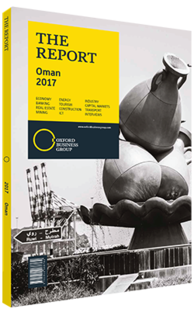Chris Breeze, Country Chairman, Shell Oman, on solutions to meeting the sultanate’s power demands: Interview

Interview: Chris Breeze
What benefits have arisen from the country’s in-country value (ICV) policies?
CHRIS BREEZE: ICV makes good business sense. Local capacity building and encouraging local content empowers local contractors and suppliers to become self-sufficient. This, is turn, increases efficiency and effectiveness in the way our Omani partners and their contractors operate. A good example are repairs being done quickly and effectively in Oman, rather than the lengthy process of equipment being sent abroad. Shell provided full support to Petroleum Development Oman and Oman Liquefied Natural Gas (LNG) on their ICV journeys, bringing our local content expertise from other parts of the world and seconding experts into the ventures.
How will the new Ras Markaz oil storage facility impact Oman’s position as a strategic energy hub?
BREEZE: Ras Markaz Crude Oil Park was announced by Oman Tank Terminal Company – a subsidiary of Oman Oil Company – in June 2016, and is expected to be operational and completed by 2019. The phase one storage capacity of the project will reportedly be around 6m tonnes of crude. This is just one of a number of projects within the remit of the Special Economic Zone Authority at Duqm. The project is in line with the growth in demand for oil storage facilities, and may yet become one of the largest oil storage hubs worldwide. It is likely to replace Mina Al Fahal as the export terminal for crude from the south of Oman. Ras Markaz should contribute towards Oman’s role as a strategic energy hub, particularly if the Saudis see a benefit in seeking an outlet for its crude through Duqm.
What role can Iranian gas play in the economic diversification of the sultanate?
BREEZE: Given the intermittency of renewable energy sources like solar or wind, for the foreseeable future there will continue to be a role for gas, which is cleaner than diesel or coal. The Iran-Oman gas pipeline could provide one of the quickest solutions to meeting the growth of power demand, both from domestic requirements, such as electricity and water desalination, as well as from industries in growing or new demand centres, like the ports of Sohar and Duqm. The growth and creation of these industries and the development of new ports and industrial hubs will create new jobs and attract international investments. Additional gas from Iran would also enable the government to continue earning an export revenue stream from LNG, which has been one of the key revenue generators since the commissioning of Oman LNG in 2000. Grid interconnectivity with other GCC countries could also enable the export of gas-generated electricity.
We also see great potential for renewable energy, particularly solar energy, to contribute to the power supply. The solar irradiance in Oman ranks among the highest in the world, and Oman has a great opportunity to benefit from large-scale solar developments to complement gas-fired power generation. While it may be a challenge in current circumstances, a transition to alternative sources of energy is an attractive prospect that could provide Oman with an opportunity to build an industry, jobs and national expertise. This would support the diversification of the energy industry, as well as make additional gas available for higher-value government income streams, like LNG export.
How can participation of small and medium-sized enterprises (SMEs) in the energy sector be supported amid a low oil price environment?
BREEZE: Despite the pressure we are all facing in the low-oil-price environment, supporting SMEs is a priority for the industry’s social investment agenda. We continue to explore different means to support the SME sector in Oman, not only through investing in their training and contracting opportunities, but also by leveraging our global expertise and local partnership to better support this budding sector of the economy.
You have reached the limit of premium articles you can view for free.
Choose from the options below to purchase print or digital editions of our Reports. You can also purchase a website subscription giving you unlimited access to all of our Reports online for 12 months.
If you have already purchased this Report or have a website subscription, please login to continue.

